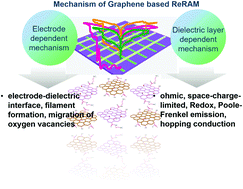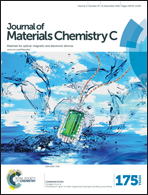A mechanistic study on graphene-based nonvolatile ReRAM devices
Abstract
Nonvolatile resistive switching random access memory (ReRAM) devices have been of critical importance in the recent information technology industry. A resistive switching memory cell in ReRAM is generally based on simple three-dimensional stacked structures composed of an insulating material sandwiched between two electrodes. Recently, graphene-based 2D materials have been actively employed as either active dielectric layers or electrodes in ReRAM devices. It is noted, however, that the working mechanism of the devices with a focus on the role of graphene-based materials has not yet been systematically discussed. Therefore, in this review article, we first overview the operation mechanism of the devices employing graphene oxide (GO), reduced graphene oxide (rGO), hybrid GO, and hybrid rGO as dielectric layers. Next, the mechanism of the cells based on graphene electrodes is summarized. We systematically discuss the operation principle in terms of the constitution and architecture of the cells. The comprehensive review is finalized with concluding remarks and a prospective for future study.



 Please wait while we load your content...
Please wait while we load your content...